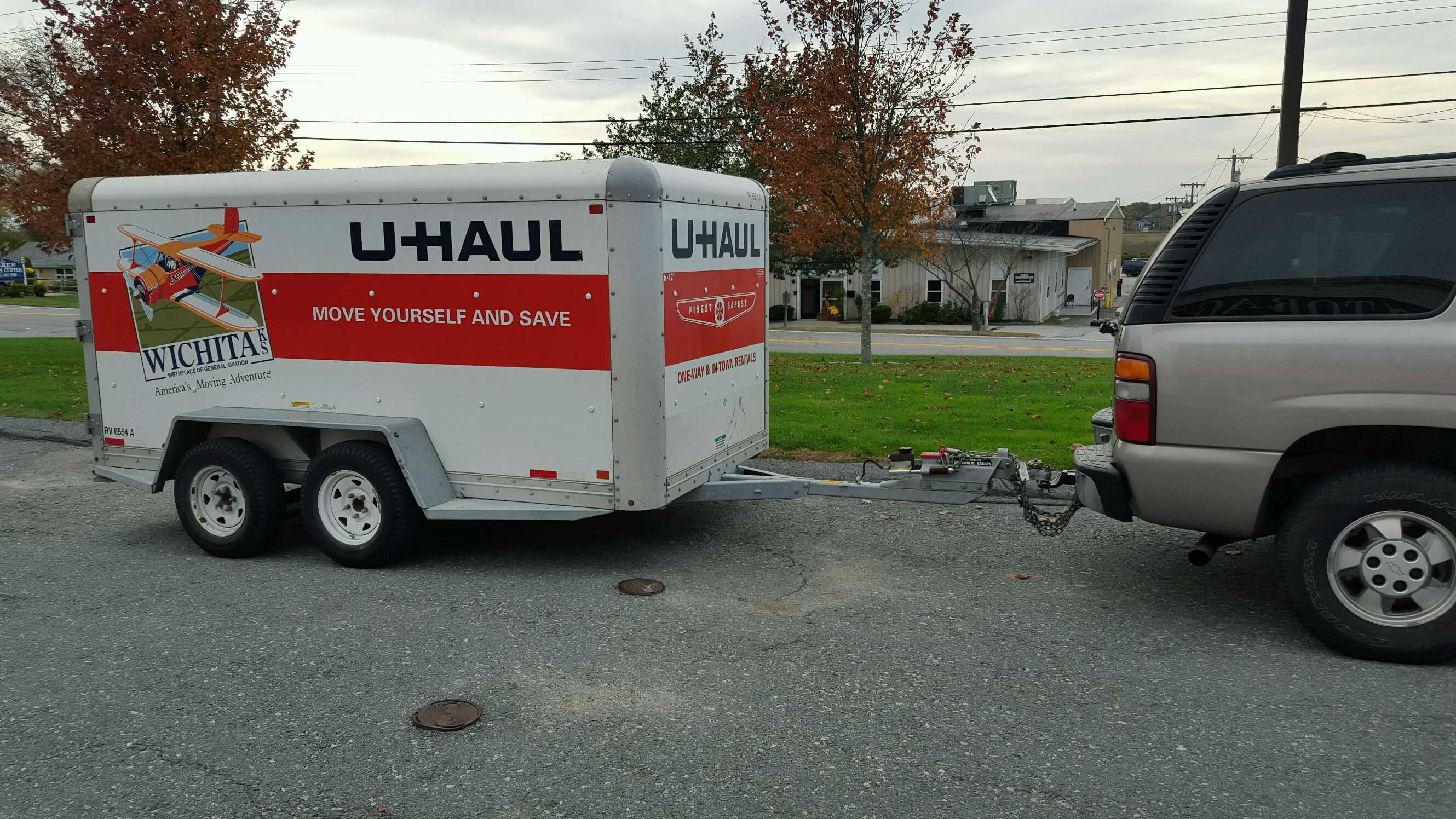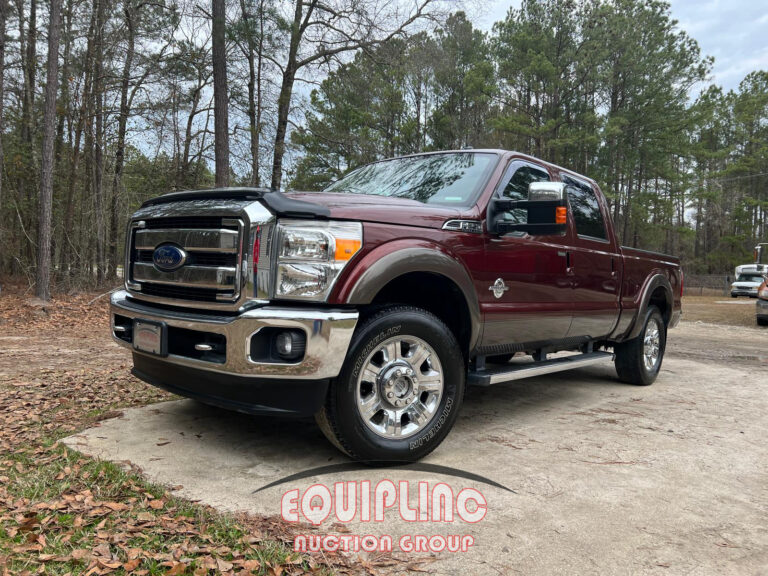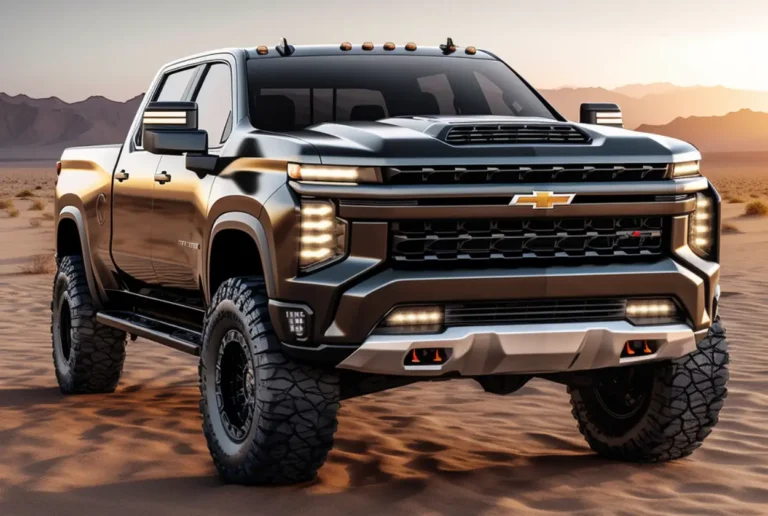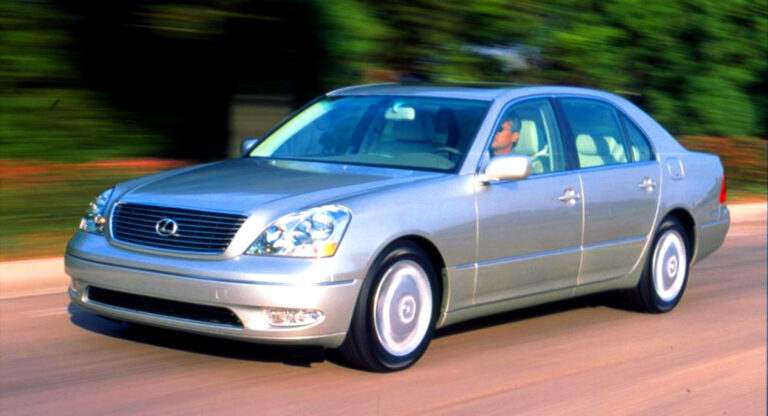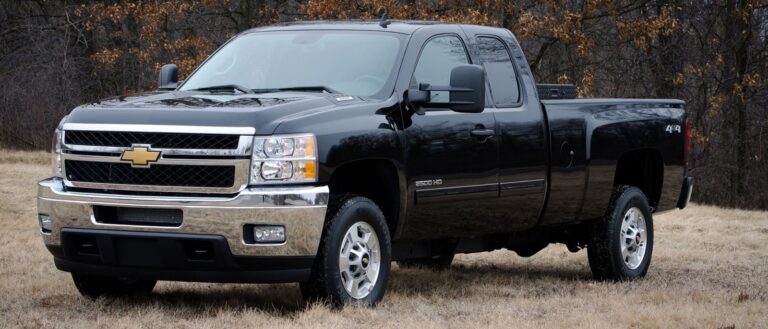U-Haul Trailer: Your Comprehensive Guide to DIY Hauling and Moving
U-Haul Trailer: Your Comprehensive Guide to DIY Hauling and Moving cars.truckstrend.com
Embarking on a move, clearing out a garage, or transporting a prized possession often brings forth the question of how to efficiently and affordably get your belongings from point A to point B. For countless individuals and businesses across North America, the answer lies in the familiar orange and white emblem of a U-Haul trailer. More than just a simple box on wheels, a U-Haul trailer represents freedom, flexibility, and the empowerment of the do-it-yourself spirit.
This comprehensive guide delves into the world of U-Haul trailers, exploring their various types, the benefits they offer, the step-by-step process of renting and using them, critical safety considerations, and expert tips to ensure a smooth and successful experience. Whether you’re a seasoned DIY mover or a first-timer contemplating a significant haul, understanding the nuances of U-Haul trailers will equip you with the knowledge to make your next project a breeze.
U-Haul Trailer: Your Comprehensive Guide to DIY Hauling and Moving
Understanding the U-Haul Trailer Ecosystem: Versatility on Wheels
U-Haul’s extensive fleet of trailers is designed to cater to a diverse range of hauling needs, offering specific designs optimized for different types of cargo. Familiarizing yourself with these options is the first step in choosing the right tool for your task.
Types of U-Haul Trailers
-
Cargo Trailers (Enclosed): These are perhaps the most popular choice for household moves, offering protection from the elements and security for your belongings. They come in several sizes, typically measured by their interior dimensions:
- 4′ x 8′: Ideal for small moves, dorm rooms, or transporting a few pieces of furniture.
- 5′ x 8′: A versatile option for apartment moves, small offices, or hauling appliances.
- 5′ x 10′: Offers more space for multi-room apartment moves or larger single items.
- 6′ x 12′: The largest enclosed trailer, suitable for 1-2 bedroom homes or substantial cargo. It’s often the go-to for those who need significant enclosed space.
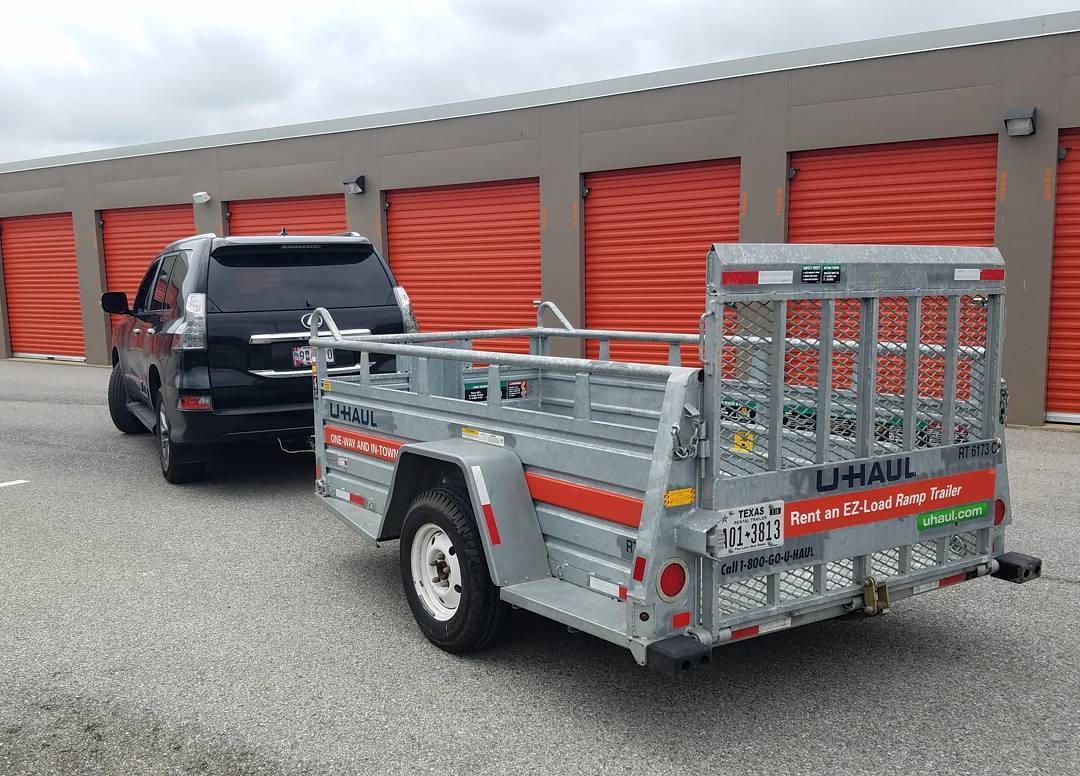
-
Utility Trailers (Open): Designed for hauling bulky, heavy, or irregularly shaped items that might not fit or be easily loaded into an enclosed trailer. Their open design means contents are exposed to the elements and require proper securing.
- 4′ x 7′ & 5′ x 8′: Excellent for yard work, small construction materials, ATVs, or motorcycles.
- 5′ x 10′ & 6′ x 12′: Larger versions capable of handling landscaping equipment, lumber, building supplies, or even small vehicles if properly secured. Many feature a low deck and a loading ramp for ease of use.
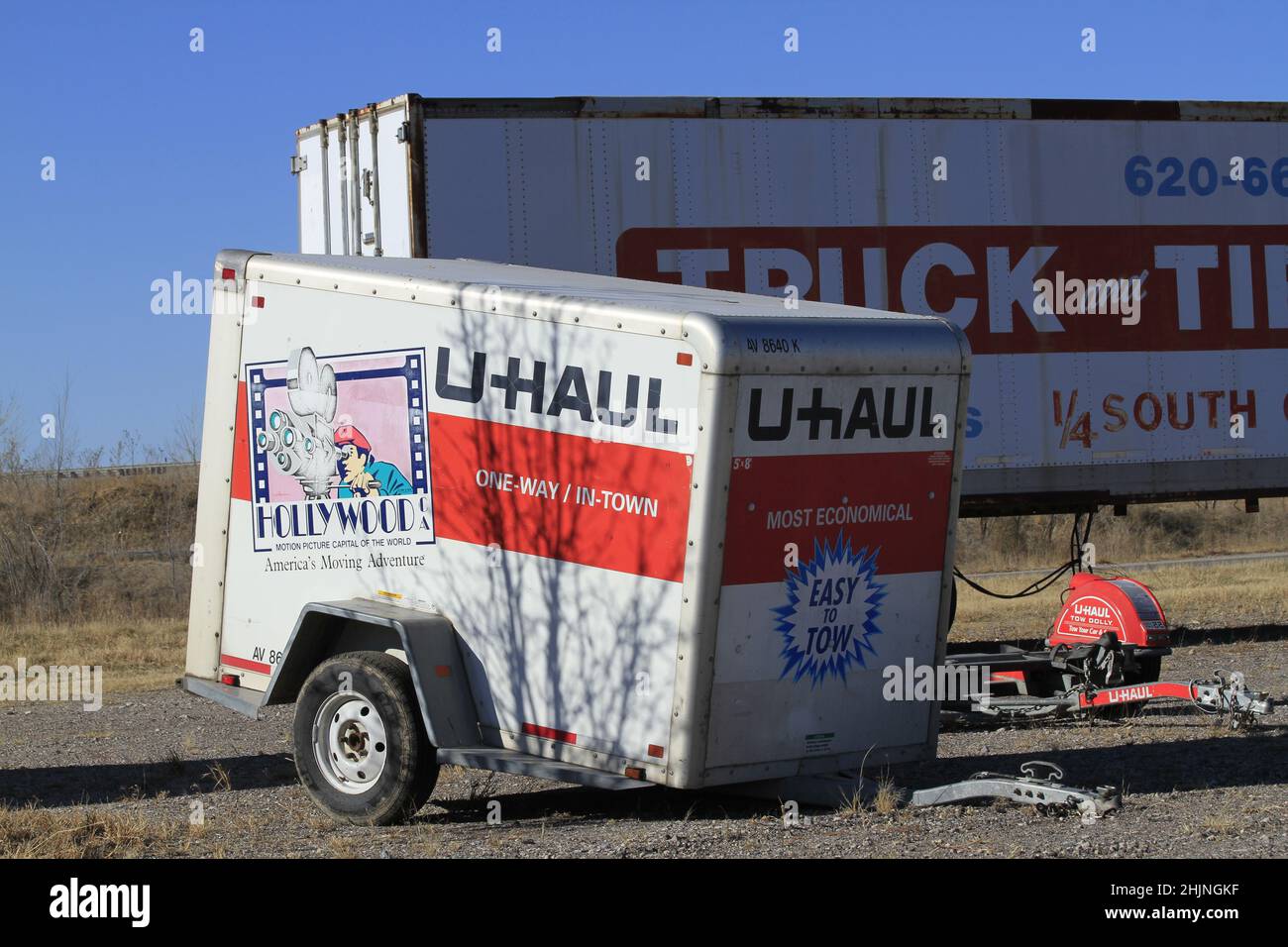
-
Auto Transport (Car Haulers): These full-size trailers are specifically built to transport an entire vehicle, with all four wheels on the trailer.
- They are ideal for long-distance car moves, transporting non-running vehicles, or for those who prefer not to add mileage to their towed vehicle. They come with integrated ramps and tie-down points for secure loading.
-
Tow Dollies: A more compact and often more affordable option for towing a vehicle, a tow dolly lifts only the front two wheels of the towed car off the ground.
- They are primarily suited for front-wheel-drive vehicles and shorter distances. While convenient, they require the steering wheel of the towed vehicle to be unlocked and secured straight, or in some cases, the driveshaft to be disconnected for rear-wheel-drive vehicles to prevent transmission damage.

Why Choose a U-Haul Trailer?
The appeal of U-Haul trailers extends beyond their diverse offerings:
- Cost-Effectiveness: Often significantly cheaper than hiring a full-service moving company or renting a large moving truck for smaller loads.
- Flexibility & Convenience: Rent for a day, a week, or longer. Pick up and drop off at thousands of locations across North America, including convenient one-way rentals.
- Variety of Sizes: Ensures you only pay for the space you need, preventing wasted money on oversized equipment or the frustration of too little space.
- Accessibility: U-Haul’s vast network of corporate stores and independent dealers makes finding a trailer readily available in most areas.
- DIY Control: You maintain full control over your schedule, packing, and transportation, which can be invaluable for personalized moves.
The U-Haul Trailer Rental Process: A Step-by-Step Guide
Renting a U-Haul trailer is a streamlined process designed for efficiency. Following these steps will ensure a smooth experience from reservation to return.
-
Reservation:
- Online or Phone: The easiest way to reserve is through the U-Haul website or by calling their reservation line. You’ll need to specify the type and size of trailer, your pickup and drop-off locations (if different), and your desired dates.
- In-Person: You can also visit a U-Haul location directly, though availability might be limited without a prior reservation, especially during peak moving seasons (end of month, summer).
- Vehicle Information: Be prepared to provide details about your towing vehicle (make, model, year) as U-Haul will verify its compatibility and tow rating.
-
Vehicle Compatibility Check: U-Haul takes safety seriously and will only rent you a trailer if your towing vehicle meets their stringent requirements. This includes:
- Adequate Tow Capacity: Your vehicle’s tow rating must exceed the gross weight of the loaded trailer.
- Proper Hitch: A hitch ball of the correct size (usually 1-7/8" or 2") and a hitch receiver of sufficient class (Class I, II, III, or IV) are essential.
- Working Lighting Connections: A standard 4-pin or 7-pin wiring harness is required for brake lights, turn signals, and running lights.
-
Pickup Day:
- Arrival: Arrive at your designated U-Haul location at your scheduled time. Have your driver’s license, reservation details, and a valid credit card ready.
- Paperwork: You’ll complete the rental agreement, which includes reviewing terms, conditions, and insurance options.
- Hook-Up & Inspection: A U-Haul representative will assist you in properly connecting the trailer to your vehicle, ensuring the hitch is secure, the safety chains are crossed, and the lighting harness is working. They will also perform a visual inspection of the trailer with you, noting any existing damage. Don’t hesitate to ask questions during this crucial step.
-
Drop-off:
- Timely Return: Return the trailer to the agreed-upon location by the specified time to avoid late fees.
- Inspection: A U-Haul representative will inspect the trailer for new damage and confirm its return.
Essential Considerations for Safe Trailering
Towing a trailer significantly changes your vehicle’s dynamics. Prioritizing safety is paramount to a successful journey.
Vehicle Requirements & Preparation
- Tow Rating: Always know your vehicle’s maximum towing capacity, typically found in your owner’s manual. Never exceed this limit.
- Hitch & Wiring: Ensure your hitch is securely mounted, rated for the load, and the ball is the correct size. Confirm your electrical connector provides working brake lights, turn signals, and running lights.
- Tire Pressure: Check your tow vehicle’s tire pressure (especially the rear tires) and the trailer’s tire pressure before departing. Improper inflation can lead to instability and blowouts.
- Mirrors: Consider extended mirrors for better visibility, especially with wider trailers.
Weight Distribution & Loading
This is arguably the most critical aspect of safe trailering. Improper loading can lead to dangerous "sway" and loss of control.
- 60/40 Rule: Aim to have 60% of the trailer’s total cargo weight loaded in the front half of the trailer (closest to the towing vehicle), and 40% in the rear.
- Low & Centered: Place the heaviest items on the floor, directly over or slightly forward of the trailer’s axle(s). Distribute weight evenly from side to side.
- Secure Contents: Use moving blankets, tie-down straps, and rope to prevent items from shifting during transit. Shifting cargo can dramatically alter weight distribution and cause instability.
Driving Tips with a Trailer
- Reduce Speed: Drive slower than you normally would, especially on highways, around curves, and in adverse weather.
- Increase Braking Distance: Your stopping distance will be significantly longer. Maintain ample space between your vehicle and others.
- Wider Turns: Trailers cut corners. Take wider turns to avoid hitting curbs, poles, or other vehicles.
- Lane Changes: Plan lane changes well in advance and make them gradually.
- Backing Up: This is often the trickiest part. Practice in an empty lot. Remember that the trailer will move in the opposite direction of your steering wheel initially. Small, precise adjustments are key.
- Hills: Downshift on inclines to maintain power and on declines to use engine braking, reducing strain on your brakes.
Insurance Options
Your personal auto insurance policy may cover damage to the U-Haul trailer or liability for accidents involving it, but coverage varies widely. U-Haul offers supplemental coverage options:
- Safemove®: Covers damage to your cargo and offers supplemental liability coverage.
- Safetow®: Specifically for trailers, it covers damage to the U-Haul trailer itself.
- Review these options carefully and compare them with your existing policy.
Maximizing Your U-Haul Trailer Experience: Expert Tips
Beyond the basics, these tips can further enhance your trailer rental experience.
- Plan Ahead: Reserve your trailer well in advance, especially during peak seasons. Map out your route, considering potential low clearances or sharp turns.
- Pack Smart:
- Utilize Space: Pack boxes tightly to prevent shifting. Use soft items like blankets and pillows to fill gaps.
- Disassemble: Take apart furniture to make it more compact and easier to load.
- Essentials Bag: Keep vital documents, medications, and immediate necessities with you in your vehicle, not in the trailer.
- Secure Everything: Invest in quality tie-down straps and moving blankets. Even seemingly minor shifts can become dangerous at highway speeds.
- Practice Driving: If you’re new to towing, find an empty parking lot and practice turning, braking, and especially backing up before hitting the open road.
- Pre-Trip Check: Before every leg of your journey, double-check the hitch connection, safety chains, lights, and tire pressure on both your vehicle and the trailer.
- Communicate with U-Haul: If you encounter any issues (e.g., breakdown, need to extend rental), contact U-Haul’s roadside assistance or customer service immediately.
U-Haul Trailer Pricing: An Overview
U-Haul trailer rental prices are highly dynamic and influenced by several factors, including:
- Trailer Type and Size: Larger and specialized trailers (like auto transports) typically cost more.
- Rental Duration: Daily rates are common, with discounts often applied for longer rentals (e.g., weekly).
- Location: Prices can vary based on demand and availability in specific geographic areas.
- One-Way vs. Round Trip: One-way rentals (picking up in one city and dropping off in another) are usually more expensive due to the logistics of repositioning the equipment. Round-trip rentals are generally more affordable.
- Demand: Peak moving seasons (summer, end of month) can see higher prices.
Important Note: The prices provided below are estimates and subject to significant variation based on the factors listed above. For precise pricing, always obtain a quote directly from the U-Haul website or a representative for your specific rental dates and locations.
Example U-Haul Trailer Estimated Daily Rental Prices (Round Trip)*
| Trailer Type | Size | Estimated Daily Price Range (USD) | Notes |
|---|---|---|---|
| Cargo Trailers | 4′ x 8′ | $15 – $25 | Smallest enclosed, great for light loads. |
| (Enclosed) | 5′ x 8′ | $20 – $35 | Popular for apartment moves. |
| 5′ x 10′ | $25 – $40 | Good for small homes or larger items. | |
| 6′ x 12′ | $30 – $50 | Largest enclosed, suitable for 1-2 bedroom homes. | |
| Utility Trailers | 4′ x 7′ | $15 – $25 | Smallest open, ideal for light outdoor tasks. |
| (Open) | 5′ x 8′ | $20 – $35 | Versatile for landscaping, motorcycles. |
| 5′ x 10′ | $25 – $40 | Can handle larger items, some with ramps. | |
| 6′ x 12′ | $30 – $50 | Largest open, often with ramps for heavy equipment/small vehicles. | |
| Auto Transport | Full-size | $50 – $80 | For towing entire vehicles (all four wheels off ground). |
| Tow Dolly | Standard | $40 – $60 | For towing front-wheel-drive vehicles (front wheels off ground). |
*Disclaimer: Prices are highly variable estimates for round-trip rentals and do not include potential taxes, fees, or one-way surcharges. Always check current pricing directly with U-Haul for your specific needs.
Frequently Asked Questions (FAQ) about U-Haul Trailers
Q: Do I need a special license to tow a U-Haul trailer?
A: In most U.S. states and Canadian provinces, you do not need a special driver’s license to tow a U-Haul trailer, as long as the Gross Combined Weight Rating (GCWR) of your vehicle and the loaded trailer is within the limits of a standard driver’s license (typically under 26,000 lbs). Always verify local regulations.
Q: How do I know if my vehicle can tow a U-Haul trailer?
A: U-Haul has a detailed online tool where you input your vehicle’s make, model, and year. It will tell you if your vehicle is approved for towing their trailers and what type of hitch and wiring is required. You’ll also need to know your vehicle’s specific towing capacity from your owner’s manual.
Q: Can I drop off my trailer at a different location?
A: Yes, U-Haul offers one-way rentals, allowing you to pick up a trailer at one location and drop it off at another. Be aware that one-way rentals typically cost more than round-trip rentals.
Q: What kind of hitch do I need?
A: You’ll need a hitch receiver securely mounted to your vehicle’s frame, a hitch ball of the correct size (usually 1-7/8" or 2" for U-Haul trailers), and a wiring harness (typically 4-pin flat or 7-pin round) for the trailer’s lights.
Q: Is insurance necessary for a U-Haul trailer?
A: While not always legally required (check your state laws), it’s highly recommended. Your personal auto insurance policy may offer some coverage, but U-Haul also provides supplemental coverage options like Safetow® and Safemove® which can protect you from financial liability for damage to the trailer, your cargo, or third-party property.
Q: What if I have a breakdown with a U-Haul trailer?
A: U-Haul offers 24/7 roadside assistance. If you experience a breakdown or any issue with the trailer, contact their roadside assistance number immediately, which will be provided in your rental agreement.
Q: How do I load a car onto an auto transport trailer?
A: U-Haul auto transport trailers come with ramps and specific instructions for loading. Drive the vehicle slowly and carefully onto the trailer, ensuring it’s centered and the weight is properly distributed. Secure the vehicle using the integrated tie-down straps provided by U-Haul, ensuring they are tight and the car cannot shift.
Conclusion
U-Haul trailers stand as a testament to the power of self-reliance in moving and hauling. Their diverse range, coupled with an accessible rental system, makes them an indispensable tool for countless projects. By understanding the different types of trailers available, meticulously following safety guidelines for loading and driving, and leveraging the practical advice shared, you can transform a potentially daunting task into a manageable and even empowering experience.
While the freedom of DIY comes with the responsibility of proper planning and execution, the rewards—in terms of cost savings, flexibility, and the satisfaction of a job well done—are immense. So, whether you’re relocating across states or simply clearing out the garage, remember that a U-Haul trailer is more than just equipment; it’s your reliable partner on the road to getting things done.
